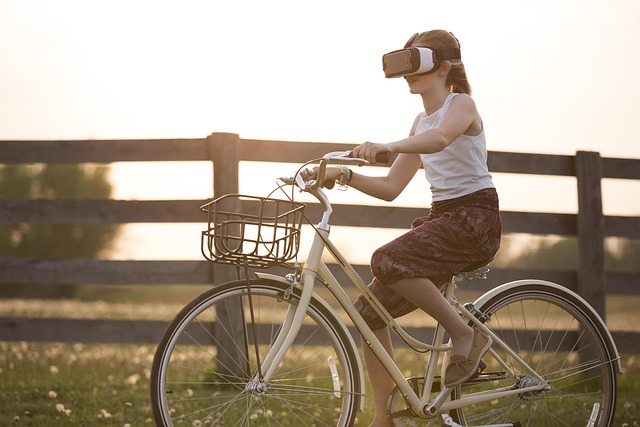Since the first cathode‑ray tube sets filled living rooms in the mid‑twentieth century, television has been a conduit for storytelling, news, and entertainment. The technology that powers those screens— from bulky tubes to slim LCD panels, OLED matrices, and now micro‑LED arrays—has evolved through relentless innovation. Each step has offered higher resolution, richer colour, and thinner profiles, but the way viewers interact with content has remained largely passive. In the era of streaming, however, a new dimension is emerging: virtual reality. By blending immersive 3‑D worlds with the familiar format of a broadcast, virtual reality is poised to redefine not only how we consume television but also how we monitor, visualise, and manage the complex processes that deliver those programmes to millions of households worldwide.
The Technological Foundations of Modern Displays
At the heart of every TV monitor lies a semiconductor structure that translates electrical signals into light. Liquid crystal displays (LCDs) and organic light‑emitting diode (OLED) panels are the dominant technologies in consumer markets today. LCDs use a backlight that passes through liquid crystals to create colour, while OLEDs emit light directly from organic molecules, allowing for true blacks and thinner builds. The latest trend, micro‑LED, promises higher brightness, lower power consumption, and virtually no burn‑in risk. These advances have not only improved visual fidelity but have also opened the door for new form factors—curved, rollable, and transparent displays—essential for future virtual reality headsets and augmented reality overlays that may one day replace or augment the traditional flat screen.
Virtual Reality Meets Streaming
Streaming platforms have already adopted adaptive bitrate algorithms to deliver content that matches fluctuating bandwidth. Virtual reality adds another layer of complexity: the need to render stereoscopic frames at 90–120 frames per second for a convincing experience. Real‑time compression techniques such as HEVC and AV1 are being extended to 3‑D video, allowing broadcasters to push high‑resolution, immersive streams to a wide audience without excessive data usage. As a result, the line between live TV and VR has begun to blur; sports events, concerts, and even news broadcasts can be experienced from a first‑person perspective, all within the same streaming infrastructure that delivers millions of channels to households.
Monitoring in a 3‑D World
Broadcast monitoring traditionally relies on high‑definition monitors, a set of physical consoles, and a handful of specialised tools to track signal quality and colour accuracy. With virtual reality, operators can step into a virtual studio where every camera feed, audio channel, and graphics overlay is represented as a 3‑D object. This spatial arrangement not only reduces the cognitive load required to locate issues but also allows for intuitive manipulation—dragging a faulty video source to a repair bay, for example. Moreover, VR environments can simulate audience placement, enabling producers to evaluate how a programme will appear on different screen sizes and viewing angles before it goes live.
Data Visualization and Decision Making
Beyond live monitoring, broadcasters must analyse vast amounts of data: viewer engagement metrics, regional preferences, and advertising performance. Virtual reality provides a unique platform for visualising these datasets. Imagine a 360‑degree dashboard where trend lines curve around you like a galaxy, colour gradients indicate peaks and troughs, and interactive nodes let you drill down into specific demographics. Such immersive analytics empower teams to spot patterns that would be invisible in flat reports. For instance, a network could instantly visualise the geographic spread of a viral clip, adjusting marketing spend in real time while still immersed in a virtual control room.
Implementation Challenges and Standards
Adopting virtual reality for broadcasting is not without obstacles. Firstly, content creation pipelines must be re‑engineered to support stereoscopic rendering, depth mapping, and interactive overlays. This requires collaboration between cinematographers, 3‑D artists, and software developers, which can increase production costs and timelines. Secondly, bandwidth constraints remain a significant hurdle; even with efficient codecs, delivering high‑quality VR streams to households with variable internet speeds demands sophisticated adaptive streaming protocols that can gracefully degrade frame rates and resolution without breaking immersion. Thirdly, interoperability is key. Industry bodies such as the International Telecommunication Union (ITU) and the Moving Picture Experts Group (MPEG) are actively developing standards—MPEG‑VR and ITU‑R BT.2390—to ensure that VR content can be exchanged seamlessly across platforms, from cloud servers to edge nodes and from studio consoles to consumer head‑sets. Finally, user safety and accessibility must be addressed: prolonged VR exposure can cause motion sickness, and content must be designed with diverse audiences—including children, the elderly, and people with disabilities—in mind.
Future Trends: From Head‑mounted Displays to Smart Environments
As hardware becomes lighter and more affordable, consumer head‑mounted displays (HMDs) will likely become commonplace in home entertainment. Integrating these with existing smart TVs could lead to hybrid experiences: a user might switch from a conventional 2‑D feed to a 3‑D exploration of the same content with a single gesture. Additionally, edge computing will play a crucial role; by processing data closer to the source, broadcasters can reduce latency, a critical factor for live sports and interactive programmes. Artificial intelligence will also be woven into the VR ecosystem, predicting user preferences and automatically adjusting the viewpoint to highlight the most relevant action. In the long term, we might see fully immersive living rooms where the physical TV is replaced by a projected holographic interface that responds to voice and gesture, all powered by streaming protocols originally designed for traditional screens.
Conclusion
The convergence of virtual reality and streaming represents more than a technological novelty; it is a paradigm shift in how television content is produced, monitored, and consumed. As display technologies evolve—from micro‑LED to flexible OLED—and as processing power becomes more distributed, the barrier between passive viewing and active participation continues to erode. Broadcasters and technologists alike must embrace this new reality, leveraging immersive monitoring tools and data visualisations to maintain quality and relevance in a fast‑moving market. The future of TV monitoring and display technology will not only keep pace with the ever‑increasing demand for high‑definition, high‑frame‑rate content but will also unlock experiences that were once the realm of science fiction.
Looking ahead, the line between content and platform will blur further. Viewers may curate their own personalised “channels” by selecting scenes from a virtual set, or co‑create storylines in real time, leveraging cloud‑based collaboration tools embedded within the VR environment. As the ecosystem matures, we can anticipate new revenue models—pay‑per‑view VR experiences, micro‑transaction‑based interactions, and targeted advertising that adapts to the viewer’s gaze and emotional state. For broadcasters, the challenge will be to balance innovation with accessibility, ensuring that the next generation of immersive television remains inclusive and affordable. In essence, virtual reality is not merely an enhancement of visual fidelity; it is a catalyst that will transform every facet of television—from production and distribution to consumption and monetisation.




